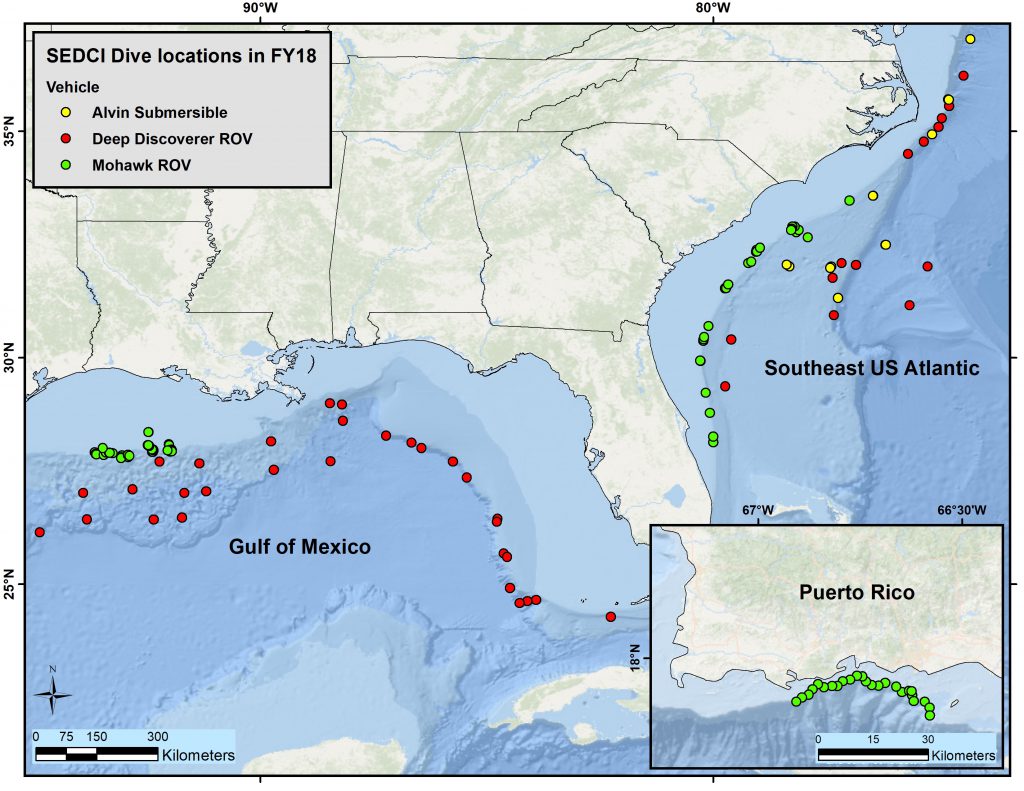
The Southeast Deep Coral Initiative (SEDCI) is a four-year, cross-line office initiative funded by NOAA’s Deep Sea Coral Research and Technology Program to study deep-sea coral ecosystems off the southeast United States, including the Gulf of Mexico (2016–2017), the southeast U.S. (2017–2018), and the Caribbean (2018–2019). In fiscal year 2018, SEDCI fieldwork projects set a record of 116 days at sea with 173 dives by submarines and remotely operated vehicles (ROVs), working in all three subregions of the southeast U.S.
The highlights of the year included designation of 21 new Habitat Areas of Particular Concern (HAPCs) for deep-sea corals in the Gulf of Mexico, SEDCI’s first cruise to the Caribbean island of Puerto Rico, and a major discovery of a large Lophelia reef off South Carolina. The newly discovered “86 mile” reef ecosystem lies outside a nearby designated coral HAPC, making it vulnerable to industrial development and bottom-tending fishing gear.

SEDCI “small projects” produced several new data products. Researchers developed a web-accessible public geodatabase to share maps, coral observations, submersible dives, and managed area boundaries. Another team deployed deep-water temperature loggers in the Gulf of Mexico’s Flower Garden Banks and the south side of Puerto Rico. In partnership with USGS, SEDCI researchers also analyzed water chemistry to establish a baseline for pH, total alkalinity, and aragonite saturation levels adjacent to the deep reefs off west Florida.
Partners include NOAA’s Office of National Marine Sanctuaries, NOAA’s Office of Ocean Exploration and Research, DeepSEARCH, NOAA’s Coral Reef Conservation Program, NOAA’s National Marine Fisheries Service, the U.S. Geological Survey, and NOAA’s RESTORE Science Program.
